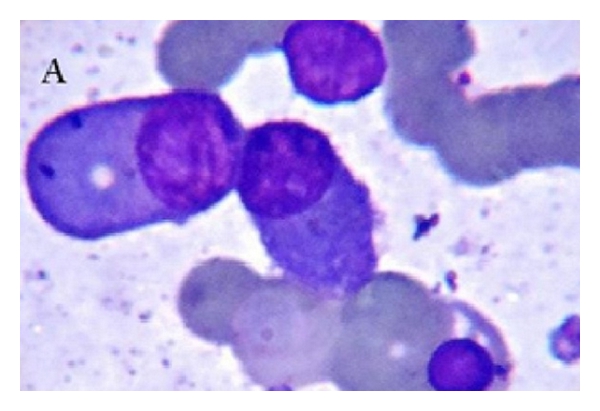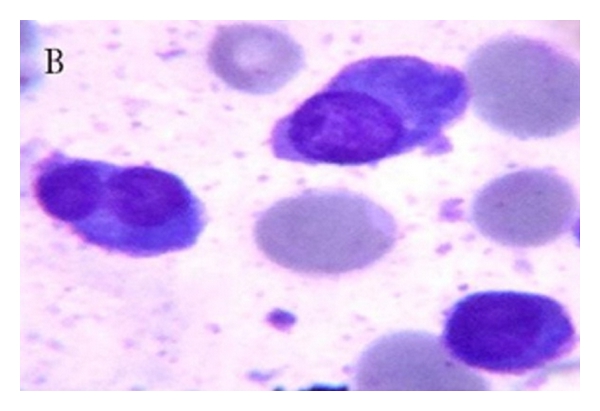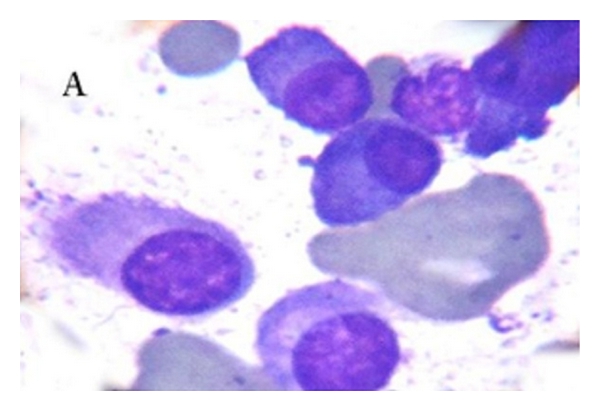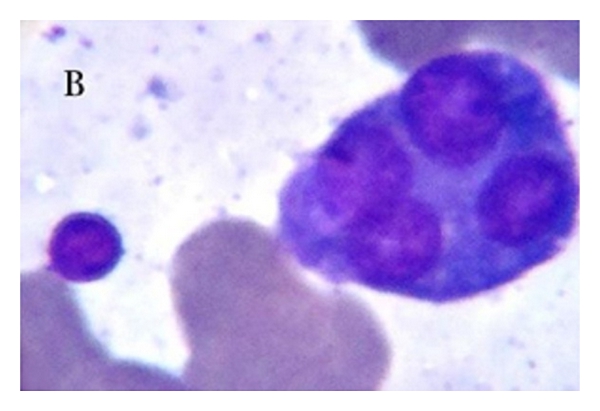Waldenström's macroglobulinemia pathophysiology
|
Waldenström's macroglobulinemia Microchapters |
|
Differentiating Waldenström's macroglobulinemia from other Diseases |
|---|
|
Diagnosis |
|
Treatment |
|
Case Studies |
|
Waldenström's macroglobulinemia pathophysiology On the Web |
|
American Roentgen Ray Society Images of Waldenström's macroglobulinemia pathophysiology |
|
Directions to Hospitals Treating Waldenström's macroglobulinemia |
|
Risk calculators and risk factors for Waldenström's macroglobulinemia pathophysiology |
Editor-In-Chief: C. Michael Gibson, M.S., M.D. [1]Associate Editor(s)-in-Chief: Mirdula Sharma, MBBS [2]
Overview
Waldenström Macroglobulinemia is uncontrolled clonal proliferation of terminally differentiated B lymphocytes, which are normally involved in humoral immunity.[1] Genes involved in pathogenesis of Waldenström Macroglobulinemia include MYD88-L265P, CXCR4 and chromosomes 6q, 13q, 3q, 6p and 18q.[2] The progression to Waldenström Macroglobulinemia usually involves the MYD88/IRAK, PI3K/Akt/mTOR molecular pathway.
Pathogenesis
- Waldenström Macroglobulinemia is uncontrolled clonal proliferation of terminally differentiated B lymphocytes, which are normally involved in humoral immunity.[1]
- In Waldenström Macroglobulinemia, peripheral B lymphocyte are stimulated to undergo somatic hypermutation of the immunoglobulin heavy chain gene in the germinal center, without class switching.
Molecular pathway alteration
- MYD88/IRAK:
- MYD88/IRAK pathway has an important role in pathogenesis of Waldenström Macroglobulinemia.[3]
- The toll-like receptor and interleukin-1 receptor signaling recruits Interleukin-1 receptor associated kinase 4 to the receptor causing activation of transcription factors of the NF-kB family.
- Bruton tyrosine kinase (BTK) phosphorylation in Waldenström Macroglobulinemia cells helps in B cell over growth and survival.
- PI3K/Akt/mTOR
- Normally, PI3K/Akt/mTOR pathway signals to inhibit apoptosis.
- In Waldenström Macroglobulinemia, activating mutation of PI3K/Akt/mTOR pathway serves toward growth and proliferation of tumor cells.
- In Waldenström Macroglobulinemia, various other factors effect PI3K/Akt/mTOR pathway signaling, as follow:
- Activators:
- MYD88 L265P mutation
- Bone marrow microenvironment - through cytokines such as insulin-like growth factor (IGF- 1) or stromal- derived factor (SDF-1)
- PTEN - a negative regulator of PI3K/Akt/mTOR pathway is decreased which causes unopposed activation of PI3K/Akt/mTOR pathway in Waldenström Macroglobulinemia.
- Inhibitor:
- Akt - inhibited by perifosine
- mTOR - inhibited by RAD001
Genetics
- Development of Waldenström Macroglobulinemia is the result of multiple gene mutations.[2]
- Genes involved in pathogenesis of Waldenström Macroglobulinemia are:
- MYD88 L265P in chromosome 3p22.2
- CXCR4
- MYD88: activating point mutation of MYD88 augments growth and survival of both normal and neoplastic B cells by preventing apoptosis. Point mutation of MYD88 leads to leucine (L) to proline (P) substitution in codon 265 (L265P) of MYD88 and produces constantly overactive protein causing proliferation of malignant cells that should normally undergo apoptosis.[2][4]
- Monoclonal gammopathy of undetermined significance patients found to have MYD88 L265P mutation are associated with a significantly higher risk of progression to Waldenström Macroglobulinemia or to other lymphoproliferative disorders.[3]
- Patients with Waldenström Macroglobulinemia with co-existing mutation of MYD88 & CXCR4 are more likely to have hyperviscosity syndrome and bone marrow involvement.[2]
- Waldenström Macroglobulinemia is associated with following chromosome abnormalities:[2]
- Deletions of 6q23 and 13q14, and
- Gains of 3q13-q28, 6p and 18q
Epigenetics
- Three most common epigenetic causes are DNA methylation, histone acetylation, and non-coding RNAs such as miRNAs.[3]
- Upregulation of miRNAs 155, 184, 206, 363, 494, and 542-3p occurs in Waldenström Macroglobulinemia; among which miRNA-155 has a crucial role in tumor cell growth and proliferation in Waldenström Macroglobulinemia.
- Gene transcription through histone acetylation occurs following increased expression of miRNA-206 and reduced expression of miRNA-9.
Associated Conditions
Several studies showed an increased incidence of second cancers in patients with Waldenström macroglobulinemia as follows:[5]
- Diffuse large B-cell lymphoma
- Myelodysplastic syndrome/Acute myeloid leukemia
- Brain tumor
- Renal MALT lymphoma [6]
Microscopic Pathology
Following are the images of microscopic histology of Waldenström's macroglobulinemia:
-
Rouleaux formation, plasmacytoid cells, and lymphoid cells in the PBF
-
Uni-binucleated plasmacytoid cells in the PBF
-
Plasmacytoid cells in the bone marrow aspirates
-
Tetranucleated plasmacytoid/plasma cell and lymphoid cell in the bone marrow aspirates
Immunohistochemistry
Malignant cells in Waldenström Macroglobulinemia:[2]
- Express Pan B-cell antigens (CD19, CD20, CD22, CD79A), and CD5
- Variable expression of CD11c, CD43, CD25
- Most express IgM surface immunoglobulin, while fewer express IgG or IgA and lack IgD
References
- ↑ 1.0 1.1 Waldenström's macroglobulinemia. Wikipedia (2015)https://en.wikipedia.org/wiki/Waldenström%27s_macroglobulinemia#Pathophysiology Accessed on November 6, 2015
- ↑ 2.0 2.1 2.2 2.3 2.4 2.5 Epidemiology, pathogenesis, clinical manifestations and diagnosis of Waldenström macroglobulinemia. UpToDate (2015)http://www.uptodate.com/contents/epidemiology-pathogenesis-clinical-manifestations-and-diagnosis-of-waldenstrom-macroglobulinemia?source=see_link Accessed on November 9, 2015
- ↑ 3.0 3.1 3.2 Waldenström macroglobulinemia. International Waldenström Macroglobulinemia foundation (2015)http://www.iwmf.com/sites/default/files/docs/WM_Review_Ghobrial_Jan2014.pdf Accessed on November 12, 2015
- ↑ Waldenström macroglobulinemia. Genetics Home Reference (2015)http://ghr.nlm.nih.gov/condition/waldenstrom-macroglobulinemia Accessed on November 9, 2015
- ↑ Morra E, Varettoni M, Tedeschi A, Arcaini L, Ricci F, Pascutto C, Rattotti S, Vismara E, Paris L, Cazzola M (2013). "Associated cancers in Waldenström macroglobulinemia: clues for common genetic predisposition". Clin Lymphoma Myeloma Leuk. 13 (6): 700–3. doi:10.1016/j.clml.2013.05.008. PMID 24070824.
- ↑ Chi PJ, Pei SN, Huang TL, Huang SC, Ng HY, Lee CT (2014). "Renal MALT lymphoma associated with Waldenström macroglobulinemia". J. Formos. Med. Assoc. 113 (4): 255–7. doi:10.1016/j.jfma.2011.02.007. PMID 24685302.



